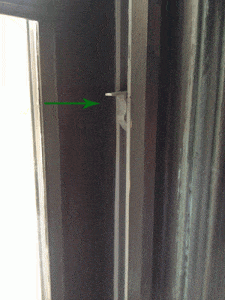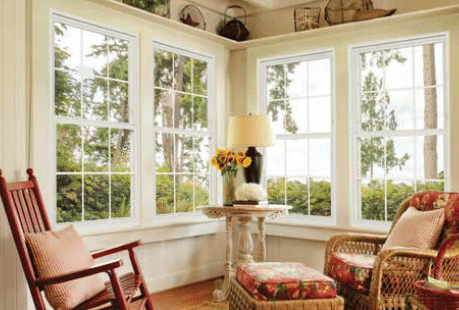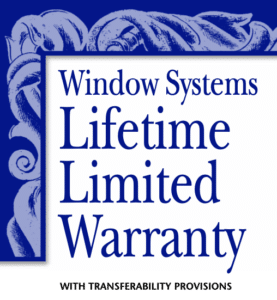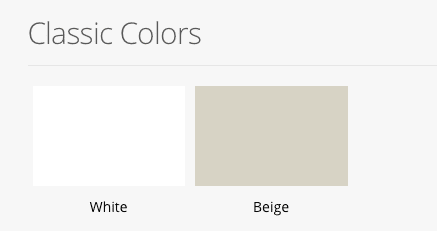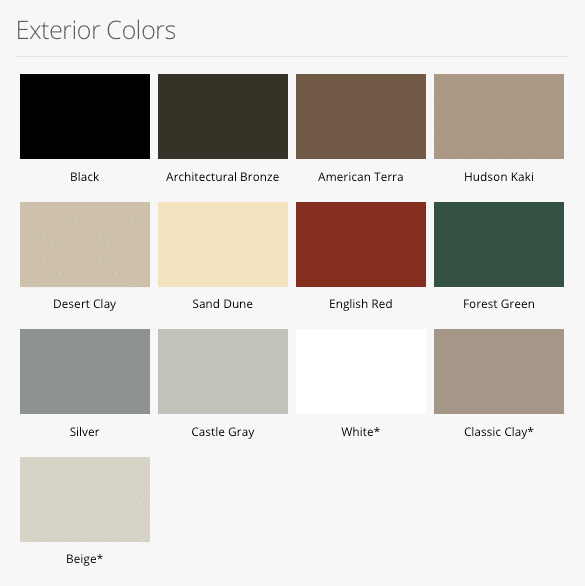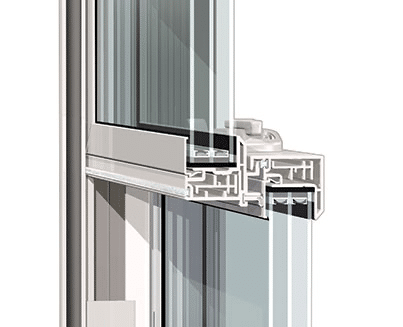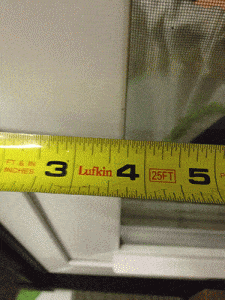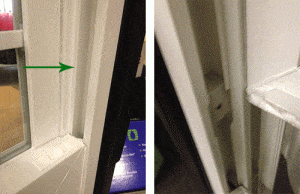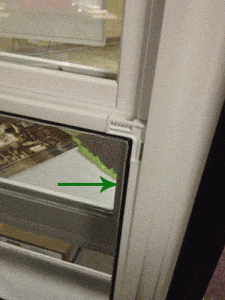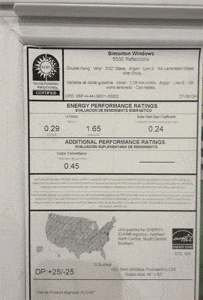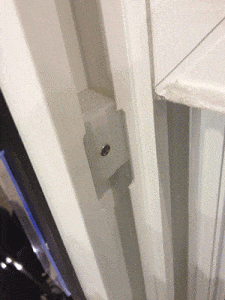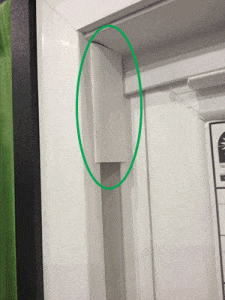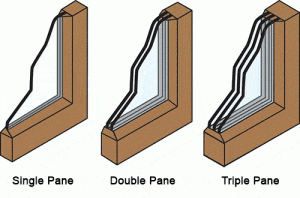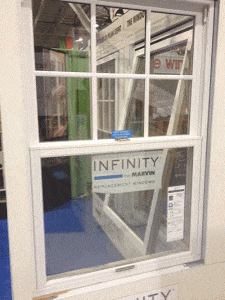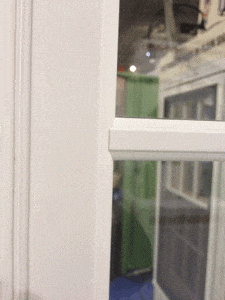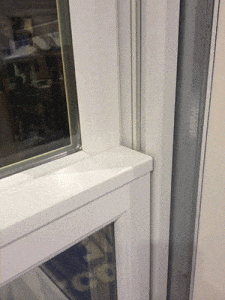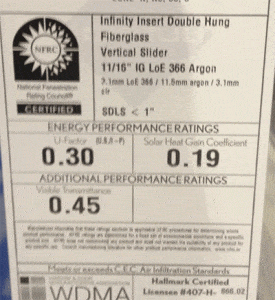If you’re shopping for replacement windows in 2025, chances are American Craftsman has come up in your research. Sold widely through major home improvement retailers, these windows promise affordable, easy-to-get vinyl solutions. In this deep-dive review we strip away the marketing and answer the real questions: Are American Craftsman windows any good? How do they perform? Are they the best value?
Pros
- Low prices
- Available at box stores
- Backed by Ply Gem
Cons
- Bad reputation for quality
- Warranty not transferable
- Limited features/options
In my experience these windows are some of the cheapest windows out there. That’s not horrible if you’re looking for a window for a shed or a very low-end rental house. This is not a product line that I would recommend to anyone who was living in the house where they would be installed. There are many nicer options available.
But, if cheap is what you need and you’re ok sacrificing quality American Craftsman windows could fit the bill.
This is a long read (but a useful one). If you want the short version up front, jump to the Quick Verdict box below — otherwise keep reading for a thorough, evidence-based breakdown, comparison charts, real-world feedback and a long FAQ section targeting the questions people actually type into Google.
Quick Verdict
Score (practical value): 7.8 / 10
- Best for: budget-conscious homeowners, rental properties, DIY replacements.
- Not ideal for: long-term homeowners seeking top energy performance, premium finishes, or transferable labor-backed warranties.
- Price range (installed): typically $375–$675 per window for current 2025 models (region and installer dependent).
- Bottom line: American Craftsman is a competent, widely available entry-level vinyl option. Good for short-to-medium term use, but it’s not a premium solution—plan accordingly.
What Is American Craftsman (2025)?
American Craftsman is a mass-market line of vinyl replacement and new-construction windows you’ll frequently see at large home improvement retailers. The brand focuses on accessibility: standard sizes, simple ordering, and price points that undercut mid-range and premium manufacturers. In 2025 the lineup is streamlined around current, in-stock models that prioritize affordability and quick turnaround.
That accessibility is both the brand’s biggest selling point and its limitation. If you want custom colors, exotic hardware, or the tightest possible thermal performance, you’ll likely move up to a different brand. If you want straightforward windows that replace drafty old sashes and are easy to obtain, American Craftsman stays in the conversation.
Which 2025 Models Are Current?
As of 2025, the most common American Craftsman models available at major retailers are: the 50 Series (basic), the 70 Series (improved performance), and select specialty/impact units for coastal regions. We’ll focus on the current, actively offered models — those are the ones buyers are actually encountering at stores and online.
Pricing Snapshot — What You’ll Pay in 2025
Price is the obvious draw. Below are typical installed price ranges we’ve seen across multiple verified quotes and reader submissions in 2025 (your local labor market will shift these numbers):
| Model / Type | Typical Installed Cost (2025) | Notes |
|---|---|---|
| 50 Series (basic) | $375 – $575 | Off-the-shelf replacements; lowest cost |
| 70 Series (upgraded) | $475 – $675 | Better weatherstripping, optional argon/Low-E |
| Custom or Specialty Shapes | $650 – $900+ | Bows, bays, arches and impact-rated units |
Note: those numbers assume professional installation. If you’re doing DIY and buying the window only, prices commonly fall in the $200–$400 range per unit.
Build Quality & Materials
These are vinyl windows with hollow-chambered frames. That’s the standard for entry-level products. What that means in plain English:
- They’re lightweight and cost-effective to manufacture.
- Thermal performance is adequate when paired with Low-E glass and argon fills, but the frames themselves aren’t foam-filled or multi-chambered to the extent you’ll find in premium options.
- Hardware is functional but not heavy-duty—expect the usual trade-offs between price and long-term durability.
Glass Packages and Insulating Units
Upgrades matter. American Craftsman’s current 70 Series offers Low-E coatings and argon-filled insulating glass units (IGUs). Those upgrades materially improve comfort and condensation resistance. If you’re choosing this brand, prioritize the Low-E + argon package for noticeable energy improvements.
Energy Efficiency: What to Expect
Energy performance is often the deciding factor for many buyers. American Craftsman models that carry upgraded IGUs can meet ENERGY STAR criteria. Expect U-factors for upgraded models in the ~0.27–0.31 range. That’s perfectly serviceable for many climates, but not class-leading.
For context, premium vinyl lines can reach U-factors below 0.20 with triple-pane configurations. If your priority is reducing heating bills in a cold climate, a higher-performing window may be a better choice long-term.
Warranty — Read the Fine Print
One of the biggest surprises buyers face is how warranties actually work. American Craftsman offers a limited lifetime warranty on frame and sash defects, with shorter coverage on glass seals and hardware. Labor coverage is usually very limited or excluded after the first year.
Key takeaways:
- The warranty is fine for an entry-level product — it protects against obvious manufacturing defects — but it’s not a replacement for strong dealer/installer support.
- If warranty labor matters to you, that’s typically provided by the installer (not the manufacturer) and varies a lot based on who does the work.
- Always register the product and keep your invoice — warranty disputes often hinge on proof of purchase and proper installation.
Installation: Why It Matters More Than You Think
Even the best window can fail if installed poorly. Because American Craftsman is sold through big-box retailers, installations are commonly performed by subcontracted crews. Some of those crews are excellent; others not so much.
If you choose this brand, do the following to protect the outcome:
- Ask who will perform the install and get references or photos of their past work.
- Confirm the installer will flash, insulate and seal properly — not just set the window in the opening.
- Keep all paperwork and register the warranty immediately after installation.
Real-World Feedback — What Homeowners Say
We aggregate reader-reported data and public reviews to identify trends. For current 2025 American Craftsman buyers, the themes are consistent:
- Positives: affordable, quick to obtain, good aesthetics for the price.
- Negatives: occasional seal failure, inconsistent installer quality, limited color/hardware choices.
That’s not unusual for a value brand — the product does what it’s designed to do, but buyers who expect premium-level durability will be disappointed.
American Craftsman vs. Competitors — Straight Comparison
Comparison shopping is where smart buyers find value. Below is a compact table comparing American Craftsman to popular alternative lines in 2025. We included brands that represent the spectrum from budget through premium:
| Brand / Series | Typical Installed Price | Energy / Performance | Warranty Highlights |
|---|---|---|---|
| American Craftsman (current) | $375–$675 | Basic to moderate (Low-E + argon available) | Limited lifetime; limited glass/parts coverage |
| ProVia Endure | $750–$1,200 | Excellent (low U-factor options) | Lifetime limited; often transferable; stronger coverage |
| Gentek Signature Elite | $650–$1,100 | Very good (solid IGU options) | Transferable lifetime options available |
| Simonton 5500 | $600–$950 | Good (competitive IGUs) | Strong limited lifetime warranty |
| Andersen / Pella (examples) | $800–$1,500+ | Excellent for premium lines | Varied — often strong but complex |
In short: American Craftsman is the value play. Competitors like ProVia and Gentek cost more but deliver incremental gains in efficiency, options, and warranty strength — gains that matter if you own your home long-term.
Where American Craftsman Makes Sense
We’re big on practicality here at The Window Dog. These are the scenarios where American Craftsman usually makes sense:
- Rental properties and investment homes — quick, inexpensive replacements keep turnover costs low.
- DIY projects — off-the-shelf windows and straightforward installation make them attractive to experienced hands.
- Short-term ownership — if you plan to sell within a few years, the upfront savings may outweigh long-term efficiency concerns.
Where to Be Careful
Don’t buy them if:
- You plan to keep the house for 15–20 years and want maximum energy savings.
- You live in a very hot or very cold climate where better U-factor and frame performance pays off quickly in utility savings.
- You need labor-backed warranty coverage for peace of mind — and the installer’s protection isn’t solid.
Buying Tips — How to Get the Best Results
- Buy the best glass package you can afford (Low-E + argon is a minimum).
- Vet your installer: ask for past project photos and written warranties for labor.
- Request written measurements and a clear scope of work (what’s included/excluded).
- Register your windows with the manufacturer immediately after installation.
- Keep the invoice and installation paperwork in a safe place for any future warranty claims.
Common Problems Reported (and How to Handle Them)
Here are issues readers and reviewers commonly report with value-oriented vinyl windows and the practical steps to reduce risk:
- Fogging/seal failure: Often caused by a failed IGU. If it happens within the warranty period, the manufacturer should replace the IGU — but labor may not be covered. Ask your installer to be involved in the claim process.
- Drafts or poor fit: Usually an installation problem. Proper flashing and insulation fix this; insist on a thorough installation with written checks.
- Hardware wear: Swapping in higher-quality replacement hardware can be a cost-effective fix.
FAQ — The Questions People Actually Ask
Are American Craftsman windows any good?
Yes — for what they are: an affordable, mass-market vinyl window. They do the job of replacing drafty windows and improving curb appeal at a low cost. Don’t expect premium materials or long-term, maintenance-free performance — those come from higher-tier brands.
Do American Craftsman windows meet ENERGY STAR standards?
Some of their upgraded configurations meet ENERGY STAR criteria depending on climate zone and IGU package. If efficiency is a priority, choose Low-E with argon-filled glass and confirm the NFRC / ENERGY STAR labels on the specific product you’re buying. You can check the database at the NFRC.
How long will they last?
Typical lifespans range from about 10 to 20 years depending on climate, sun exposure, installation quality, and maintenance.
Is the warranty transferable?
Most limited lifetime warranties on these models are for the original owner only and are not transferable. Always review the actual warranty document to confirm.
Can I install them myself?
Yes. Many buyers do. But measuring, squaring, and properly flashing the opening is critical. If you’re not confident, hire a reputable local installer — the installation quality matters more than the brand in many cases.
Internal Resources (From The Window Dog)
- Best Replacement Window Companies — pick a vetted installer near you.
- Replacement Window Warranty Guide — read the fine print before you buy.
- Replacement Window Cost Guide — understand real project pricing.
External Resources & Trusted References
Ready to compare installers and get real quotes?
Don’t rely on one estimate. Use our vetted list to find experienced, trustworthy local companies who can install American Craftsman or higher-end windows correctly. Find top-rated window companies near you and request multiple itemized quotes — then compare glass, frame, labor and warranty details side-by-side.
Final Thoughts — Is American Craftsman Right For You?
If your priority is price and availability — especially for rentals, quick replacements, or DIY projects — American Craftsman remains a solid option in 2025. If you plan to live in your home long-term, want the best energy savings, or value a transfer-capable, labor-backed warranty, budget more and consider higher-tier options like ProVia, Gentek or other premium lines.
Accuracy & Transparency — Our Promise
At The Window Dog we aim for accuracy and transparency. This review is based on manufacturer specs, NFRC/Energy Star guidance, and aggregated real-world feedback. If you believe any claim here is inaccurate or outdated, please contact us with documentation — we’ll investigate and update the article promptly. Your corrections help everyone make better decisions.
Last updated: October 2025



